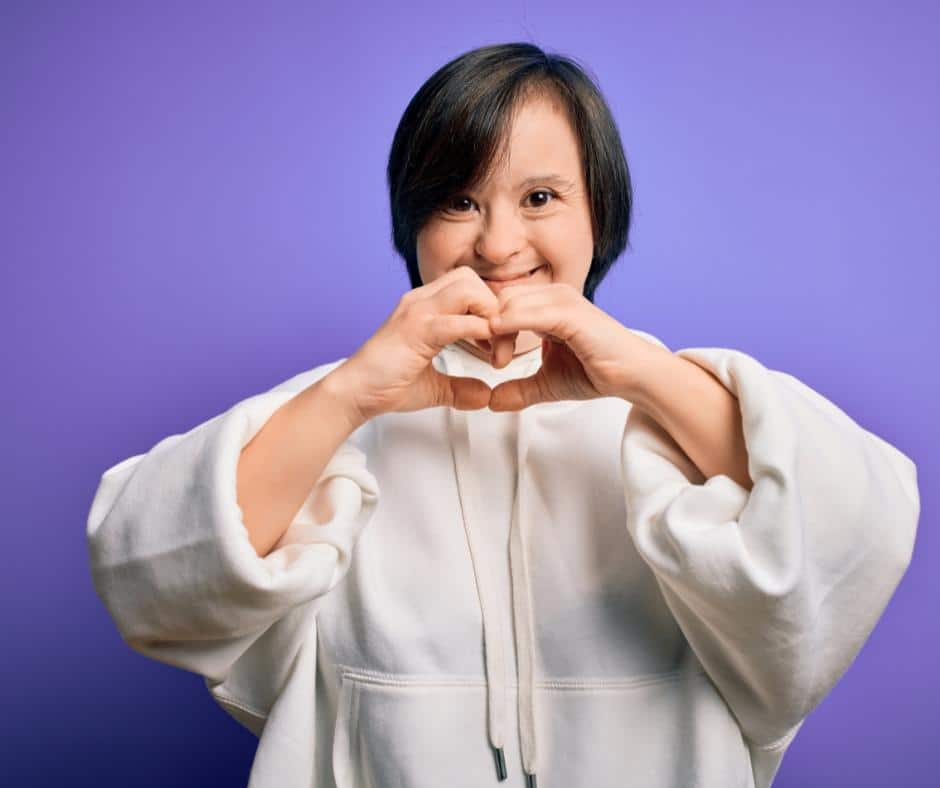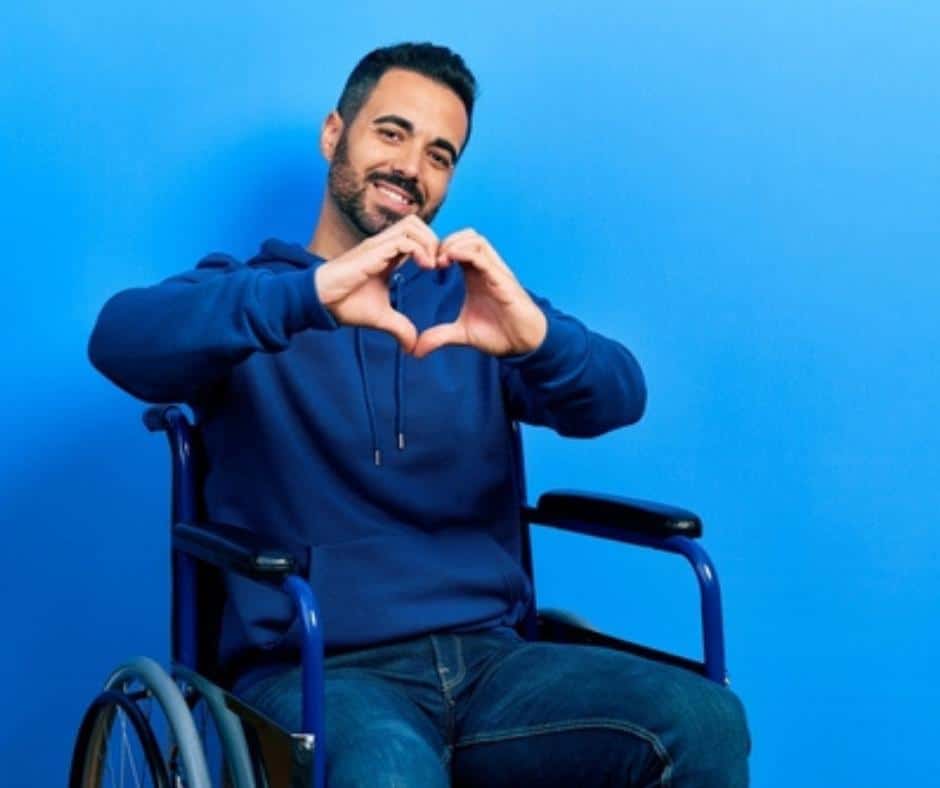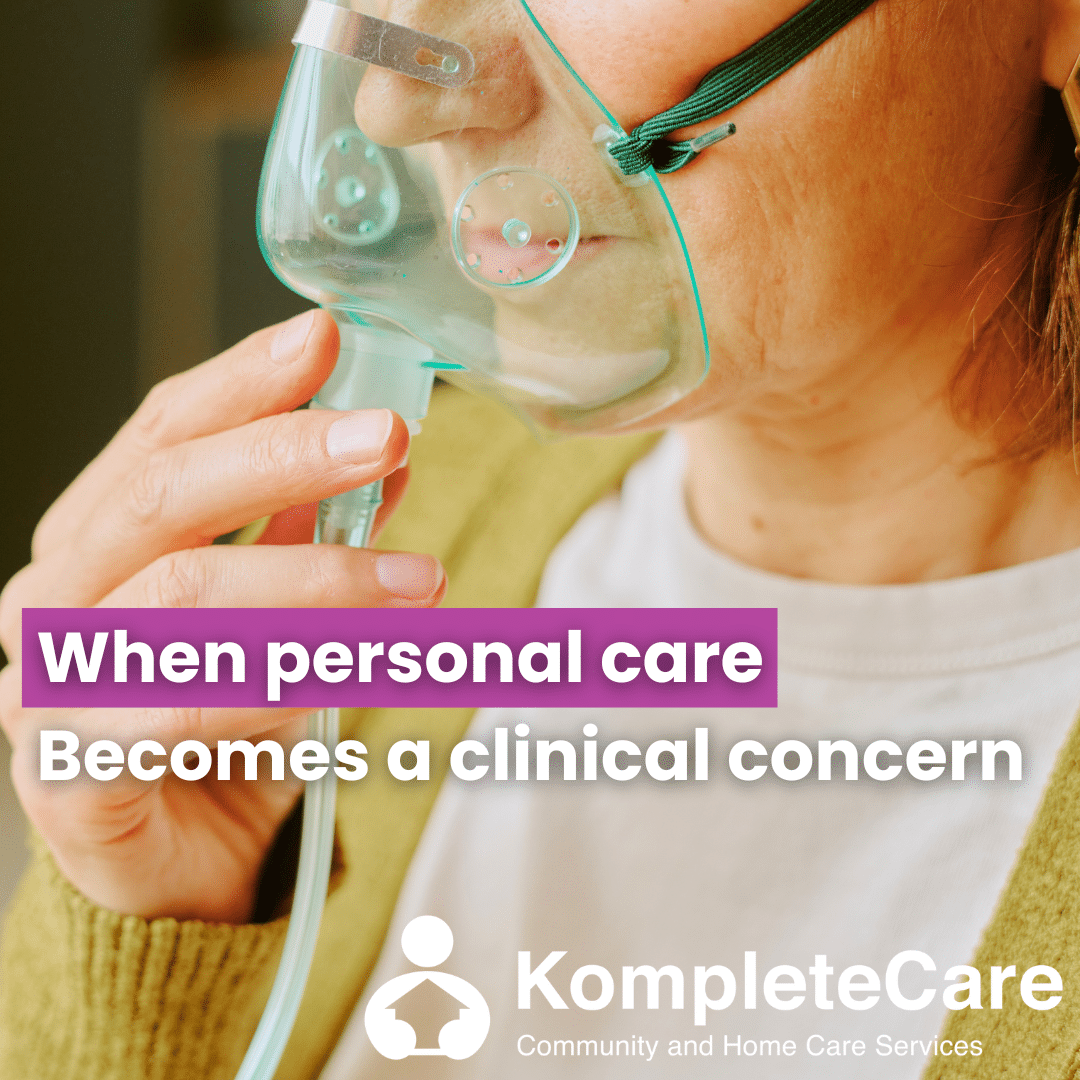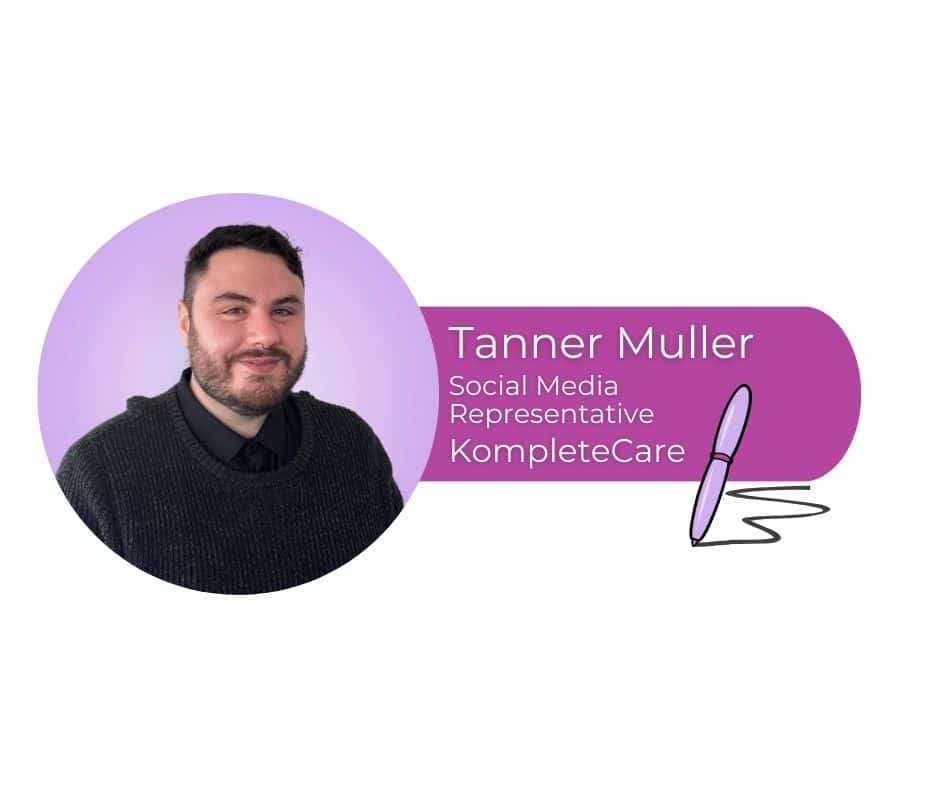With more older Australians remaining at home, the line between personal care (assistance with bathing, dressing, and daily tasks) and clinical care (nursing or allied health treatment) is becoming less distinct. Many day-to-day supports can often develop into health needs requiring trained clinicians; a distinction that is especially important now the federal government’s new Support at Home program has commenced.
For families, it is not always easy to know when everyday assistance becomes a clinical need, and this uncertainty can feel overwhelming. In-home and community providers like KompleteCare see these transitions unfold on a regular basis and understand how crucial it is to have timely, reliable support, particularly when these services overlap.
Where the line sits now
Under the Aged Care Quality Standards, providers are required to deliver personal care, clinical care, or a combination of both. In practice, personal care refers to supports that help with daily living. By contrast, clinical care involves health-related tasks that must be overseen or delivered by trained professionals, such as nurses or allied health practitioners.
These two types of supports can often intersect. For instance, a client may receive reminders from a support worker to take their daily medication (a personal care service). However, if the medication involves complex dosing, injections, or side effect monitoring, it becomes a clinical care task that must be managed by a nurse. This overlap highlights why it is important for providers to have sophisticated systems for recognising changes in health needs and ensuring timely escalation to clinical support, something KompleteCare prioritises in our approach.
How personal care can turn into clinical care
Everyday routines often expose health risks that tip supports into clinical territory. Examples include:
- Skin integrity and wounds: Assistance with showering may reveal pressure injuries or slow-healing ulcers, triggering the need for nursing assessment and wound management.
- Medication needs: Reminders are a personal support but administering and monitoring medicines (such as insulin) then becomes clinical care.
- Falls and mobility: Personal assistance with transfers can uncover gait changes or recurrent falls, prompting physiotherapy or nursing review.
In these situations, clinical care becomes essential. It is typically required when someone has a diagnosed condition that needs ongoing treatment or monitoring, such as chronic wounds, catheter care, or diabetes management. It may also be necessary when there is a noticeable change in health status – including the onset of new pain, delirium, signs of infection, or an increased risk of falls. Clinical involvement is also further mandated when certain tasks must, for safety and legal reasons, be performed by a qualified health professional.
These scenarios align with the expectations of the Aged Care Quality Standards, which require providers to identify and manage high-impact risks while maintaining best-practice clinical governance. Families often rely on providers they trust to manage these transitions smoothly, and organisations like KompleteCare play an important role in bridging this gap.
What changes under Support at Home
The Support at Home program has now replaced the previous HCP program (with CHSP transitioning no earlier than 1 July 2027). The reform introduces a clearer funding split between service types. Crucially:
- Participants will not contribute to the cost of clinical support services (for example, nursing and physiotherapy), as these are fully government funded.
- Participants will contribute to independence and everyday living services (such as personal care and domestic assistance), with rates set per service type and safeguards including a lifetime cap and hardship provisions.
The Department makes it clear that ‘Participants will make no contribution to clinical support services.’ Contributions only apply to non-clinical supports, with reduced rates for pensioners and hardship assistance available through Services Australia.
Why the overlap matters for families and providers
As personal care needs can often escalate into clinical needs, having clear pathways in place is critical. Frontline care workers should be trained to recognise and report changes in a client’s condition, while providers must ensure there are swift and reliable referral processes to nurses or allied health professionals. This safeguards the immediate wellbeing of older people and prevents minor issues from developing into serious complications.
For families, this overlap can bring reassurance that small changes in a loved one’s health will not go unnoticed or left unmanaged. Clear escalation processes reduce the likelihood of sudden hospital admissions, ease the pressure on carers, and provide peace of mind that professionals help is available when care needs shift from personal to clinical. For providers, these pathways are equally important, ensuring quality standards are met and strengthening trust with clients and their families.
By addressing health concerns early, both families and providers play a role in reducing the risk of avoidable hospital admissions – a central policy objective of the Support at Home reform, which is designed to keep older Australians living safely and independently in their communities for longer.









